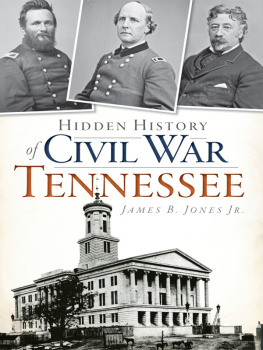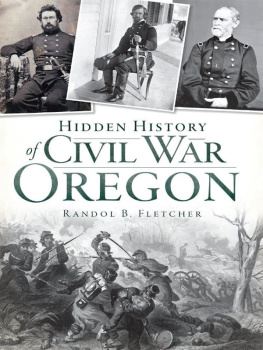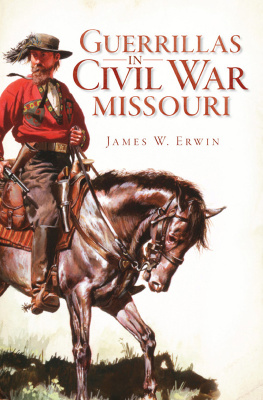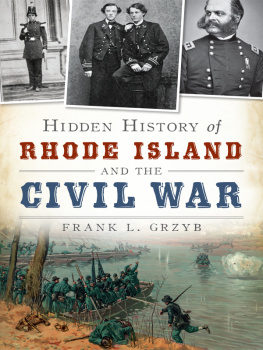

State capital of Nashville during the Civil War. Hoobler Collection, Tennessee State Library and Archives.

Published by The History Press
Charleston, SC 29403
www.historypress.net
Copyright 2013 by James B. Jones Jr.
All rights reserved
First published 2013
e-book edition 2013
Manufactured in the United States
ISBN 978.1.61423.977.2
Library of Congress Cataloging-in-Publication Data
Jones, James B., 1947
Hidden history of Civil War Tennessee / James B. Jones Jr.
p. cm. -- (Hidden history)
print edition ISBN 978-1-60949-899-3 (pbk.)
1. Tennessee--History--Civil War, 1861-1865. 2. United States--History--Civil War, 1861-1865. I. Title.
E579.J66 2013
976.804--dc23
2013024338
Notice: The information in this book is true and complete to the best of our knowledge. It is offered without guarantee on the part of the author or The History Press. The author and The History Press disclaim all liability in connection with the use of this book.
All rights reserved. No part of this book may be reproduced or transmitted in any form whatsoever without prior written permission from the publisher except in the case of brief quotations embodied in critical articles and reviews.
CONTENTS
Preface
TENNESSEE IN THE CIVIL WAR
More than Before
About fifteen years ago, I asked a colleague how many military engagements took place in Tennessee during the Civil War. He immediately piped up with the established answer provided by E.B. Long in his book The Civil War, that there were 1,462 fights in the Volunteer State during the Civil Warsecond only to Virginia, my friend said, in genuinely reverential tones. I thought my search had ended before it began, but I took a look at Longs work only to find that he did not indicate how he got his sum.
Using Longs figure of 1,462 cases of belligerency in Tennessee from 1861 to 1865, an interesting estimate can be made that raises questions about the actual amount of time spent in combat. After taking into account the length of battles such as Fort Donelson, Shiloh, Stones River, Chattanooga, Knoxville and Nashville (two weeks each), I assigned the arbitrary but rational value of three hours to all military conflicts in the state; the total number of hours spent in combat was thus 4,386 hours (or 183 days). The total number of hours Tennessee was involved in the war amounts to 35,874 (or 1,491 days). Thus, the time spent in actual fighting was 12 percent of the total. Didnt anything else transpire during the other 88 percent (1,308 days) of the time? Even after tripling the value of all combat to an average of 9 hours, only 36 percent of the time was spent in actual fighting. It was impossible to make a comparison because no such similar conjecture had been made. Nevertheless, by these calculations, the actual time spent in combat in Tennessee during the Civil War appears to have been less than half. Thus, even Nathan Bedford Forrest, the inexhaustible and famous Confederate cavalry hero, could rest and reload sometimes.
These calculations spurred my interest, and so I consulted Frederick H. Dyers Compendium for numbers and documentation. At first, I was delighted at this book of lists, but I soon found that Dyer offered no sources, only the briefest of descriptions that accounted only for Federal units. Since no Confederate units were named, I imagined that the Union forces fought phantoms. A more detailed study led to the Guide Index of the National Park Service study entitled Military Operations of the Civil War. This promising publication indicated the kind of military action that occurred at the given time and place. This was encouraging, but it provided a minimum of narrative value, did not go much beyond the listing of military events and did not place them in chronological order.
I hadnt found what I was looking for: a chronological, documented list of martial conflicts in Tennessee that provided narration based on the Official Records (OR). Either I was to drop the project or do the right thing: take it upon myself to do the work of the historian, to seek out new information and to boldly go where many had gone beforeto the OR. At first, I intended to come up with a more accurate list of combat and dates preceding the operational reports found within the OR, but these were not keyed to report citations. However, by pasting them together, I saw a limited chronology begin to emerge.
So, there was nothing else to do but count them. I reasoned that the only place to find the information was in the ORs two-volume index. It was a matter of counting beans. I went page by page, entry by entry, seven times in all, and finally concluded that there was something over 1,700 separate instances of combat, most of them accompanied by at least one circumstantial report. This list was matched to Dyers list, which proved to be manifestly lacking by comparison. My documented list was bigger, and so I concluded that I had found the documentation with which I could construct the narrated list for which I was hunting.
This meant keying in what seemed an endless number of reports on skirmishes, reconnaissance, bushwhacking, conscript sweeps, naval combat and other lesser events that were separate and distinct actions not mentioned in circumstantial combat reports or the index. These citations would have been next to impossible to enumerate without the aid of the CD-ROM technology.
I found that the Official Army and Navy records provided excellent and credible accounts, but I still wanted independent corroboration. What better sources than newspapers, diaries and correspondence? These familiar sources did not provide many beans for the combat incidents counters mill. They did, though, address the gloomy psychological aspects of the war on the homefront, politics, displacement and the plight of refugees, confiscation of property, guerrilla warfare, smuggling, inflation, currency and commodities speculation, food shortages, urban life, myriad Special and General Orders not recorded in the OR, attempts to improve public health, public education, the complexity of occupation, the roles played by women, religious and family life, murders, politics, the theater, juvenile delinquency, prostitution, murder, the liberation and shaping of the African American community and the effect of the war on children, to name but a few. There was more to the war in Tennessee than, as my neighbors nine-year-old son put it, neat fightin stuff.
Tabulations so far indicate 2,777 instances of combat in Civil War Tennessee. Until now, Virginia was held to be the state where most Civil War combat took place. The Old Dominions total, according to Long, was 2,154623 less than the newly tabulated total for Tennessee. So, if nothing else, one may conclude that there was more fighting in the Volunteer State than in any other state. That being the case, it is possible to suggest that the war was won (or lost) in Tennessee, not Virginia. For those who may censure this finding with discriminating remarks with reference to quality versus quantity, I say that quantity has a quality all its own. Virginia might regain its earlier ascendant place as the mother of all Civil War battles when someone does as I did and heeds Casey Stengels admonishment: You can look it up. It has been transferred to an online site for easier access to the public.
Next page








![Linda Romine - Frommers Nashville & Memphis [2012]](/uploads/posts/book/215328/thumbs/linda-romine-frommer-s-nashville-memphis-2012.jpg)



